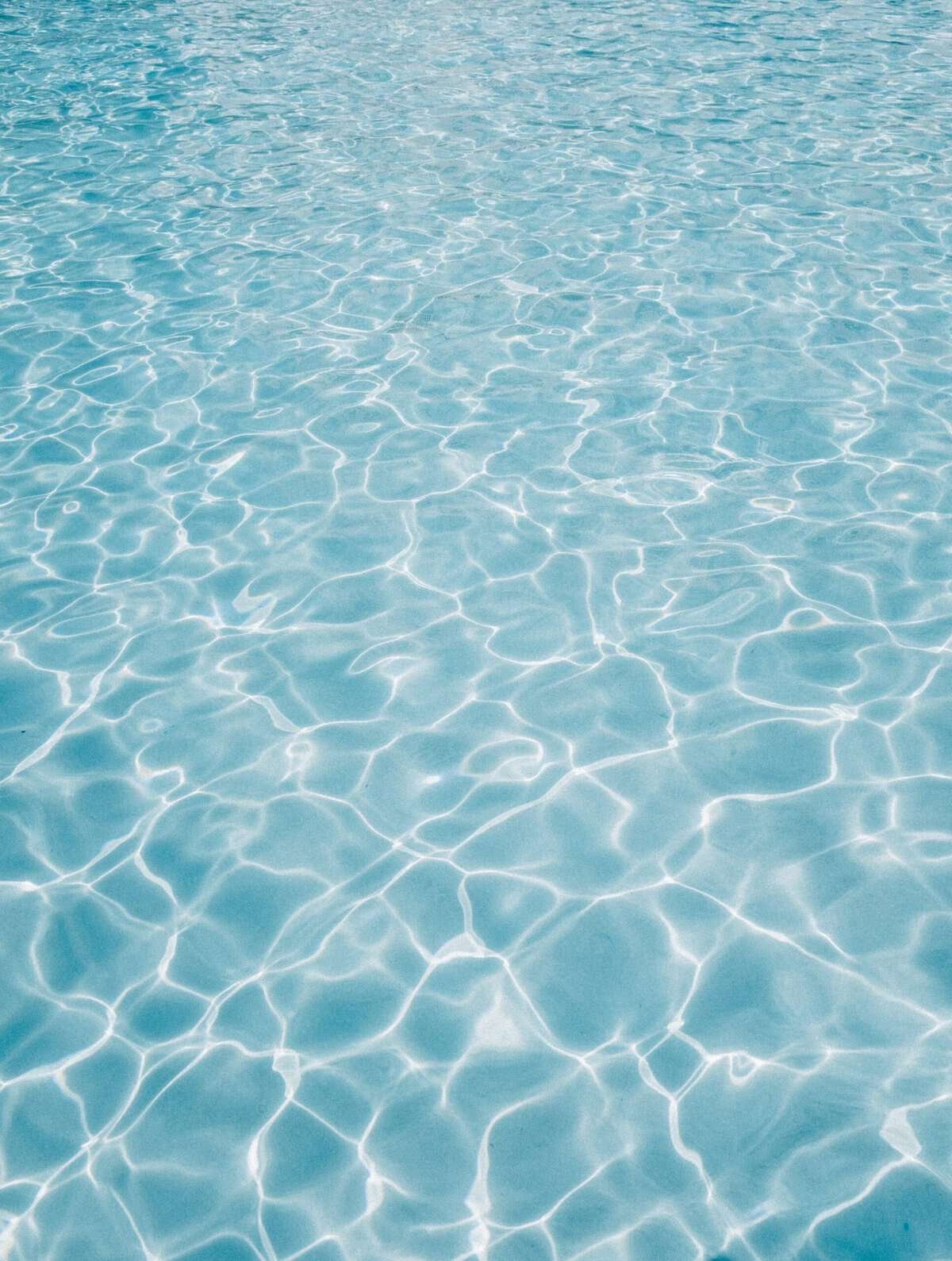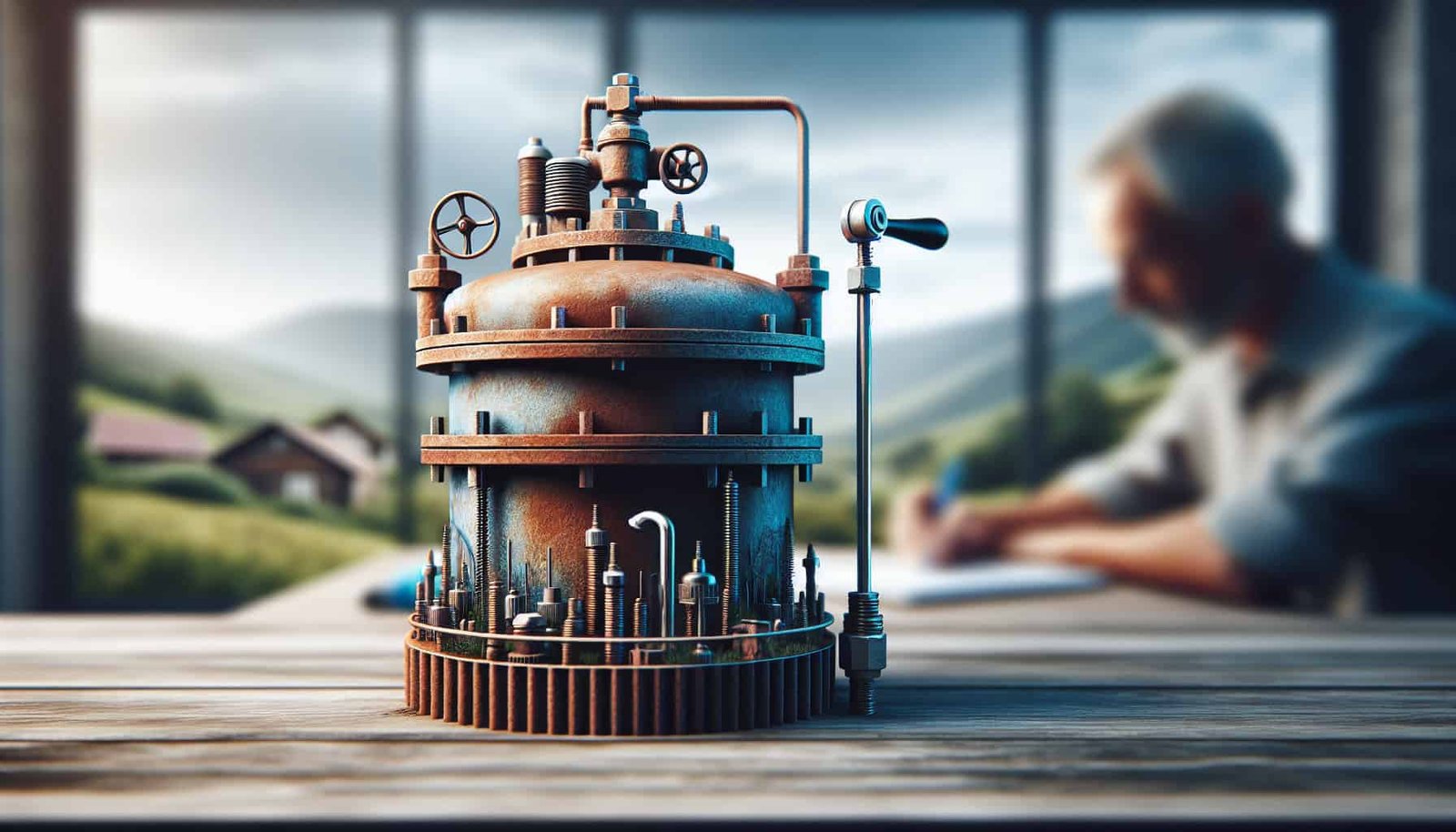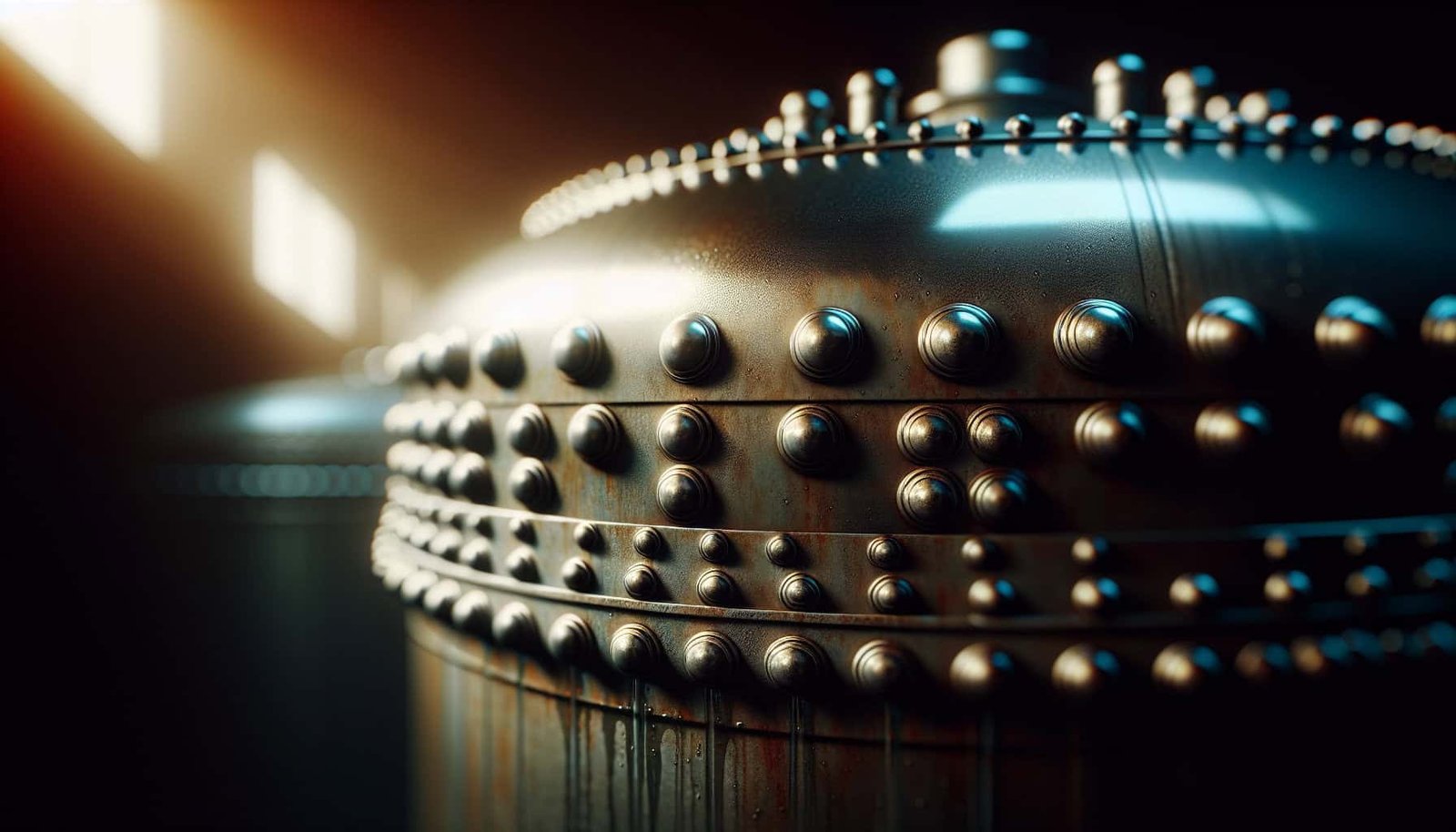If you own a well and rely on it for your household water supply, it’s important to ensure the safety of your well water pressure tank maintenance procedures. By taking the necessary precautions and being aware of potential safety issues, you can protect your well and prevent any mishaps. In this article, we will explore some practical tips and guidelines to help you maintain your well water pressure tank safely and effectively. So let’s dive in and discover how you can keep your well in top-notch condition without compromising on safety measures.
Regular Inspection and Maintenance
Understanding the Importance of Inspection
Regular inspection is essential for maintaining the proper functioning of your well water pressure tank. By conducting inspections, you can identify any potential issues before they escalate into more significant problems. Inspection allows you to detect leaks, corrosion, or faulty components, ensuring the efficient operation of your well system.
Hiring a Professional Well Inspector
To ensure a thorough inspection, it is often recommended to hire a professional well inspector. These experts have the knowledge and experience to assess all aspects of your well water pressure tank system. They can identify any hidden issues, provide accurate recommendations for repairs or replacements, and ensure that your well remains safe and functional.
DIY Inspection Tips
While it’s advisable to consult a professional, there are some simple inspection tasks you can perform on your own. Start by visually inspecting the tank for any signs of damage, such as rust, dents, or leaks. Additionally, check the pressure gauge and record the pressure readings regularly. Another important DIY inspection tip is to listen for any unusual noises coming from the pressure tank system, which could be an indication of a problem.
Scheduling Regular Maintenance
Regular maintenance is crucial for the longevity and optimal performance of your well water pressure tank. It is recommended to establish a maintenance schedule, adhering to manufacturer guidelines and recommendations. By conducting routine maintenance, you can prevent potential issues, prolong the lifespan of your pressure tank components, and maintain a safe and reliable water supply.
Addressing Minor Issues
In the course of regular inspection or maintenance, you may encounter minor issues that require attention. It is important to address these issues promptly to prevent them from escalating into more extensive problems. Whether it’s replacing a faulty pressure switch, tightening connections, or addressing a minor leak, taking care of these issues immediately can save you time, money, and potential safety concerns.
Ensuring Proper Installment of the Pressure Tank
Hiring a Qualified Well Pump Installation Professional
The proper installment of your pressure tank is crucial to ensure its functionality and longevity. It is highly recommended to engage the services of a qualified well pump installation professional for this task. These experts have the expertise and experience to ensure that the pressure tank is installed correctly, following industry standards and guidelines. By relying on their expertise, you can eliminate the risk of improper installation, which can lead to safety issues and system malfunctions.
Choosing the Right Pressure Tank Size
Selecting the appropriate pressure tank size is essential for maintaining consistent water pressure in your well system. Factors such as the size of your household, peak water demand, and the characteristics of your well should be considered when choosing the tank size. A professional well pump installation technician can assess these factors and recommend the ideal tank size to ensure optimal performance and prevent pressure-related safety issues.
Checking the Correct Pressure Settings
Proper pressure settings are crucial for the efficient operation of your well water pressure tank system. It is essential to ensure that the pressure switch is set to the correct range according to your specific requirements. A professional well pump installation technician can accurately adjust the pressure settings, minimizing the risk of excessive pressure or low water pressure issues, which can lead to safety concerns.
Proper Placement and Mounting of the Tank
The placement and mounting of the pressure tank should be done in accordance with safety guidelines and manufacturer recommendations. The tank should be positioned on a stable surface, protected from potential damage, and adequately secured to prevent accidents or system malfunctions. A professional well pump installation technician can ensure proper placement and mounting, minimizing the risk of safety issues associated with inadequate tank positioning.
Inspecting and Tightening Connections
Checking the connections of your pressure tank system is an important maintenance task that ensures the system operates safely and efficiently. Over time, connections may loosen due to vibrations or expansion and contraction. Regular inspection and tightening of these connections can prevent leaks, which can lead to safety hazards and decrease the overall performance of your well system.

Monitoring Well Water Pressure
Understanding Normal Pressure Range
Monitoring the water pressure in your well system is an essential part of its maintenance. It is crucial to understand the normal pressure range for your specific system. Typically, the pressure should fall within a range of 40 to 60 pounds per square inch (psi). Deviations beyond this range may indicate issues that require attention.
Installing Pressure Gauges
To monitor water pressure accurately, installing pressure gauges is highly recommended. These gauges provide a visual representation of the pressure readings, allowing you to identify any fluctuations and measure whether the pressure remains within the acceptable range. Pressure gauges can be easily installed by a professional or following the manufacturer’s instructions.
Regularly Monitoring Pressure Levels
Regularly monitoring pressure levels helps you stay aware of any shifts or abnormalities in your well water system. By checking the pressure gauge regularly, you can detect any sudden drops or spikes in pressure that may indicate a problem. Monitoring pressure levels is an integral part of proactive maintenance, ensuring the optimal performance and safety of your well system.
Identifying Pressure Fluctuations
Pressure fluctuations can be an indication of various issues within your well water pressure tank system. Sudden increases in pressure may suggest a faulty pressure switch, while frequent drops in pressure could indicate a leak or a failing pump. By identifying pressure fluctuations, you can take prompt action to address the underlying causes and prevent safety issues from arising.
Sudden Pressure Drops or Spikes
Sudden drops or spikes in water pressure require immediate attention. These can potentially damage your well system components and even pose safety risks. If you notice any significant pressure changes, it is advisable to contact a well water system expert promptly. They can diagnose the issue, recommend the necessary repairs, and ensure the continued safe operation of your well system.
Maintaining and Replacing Pressure Tank Components
Checking and Replacing Pressure Switches
Pressure switches play a vital role in controlling the operation of your well water pressure tank system. Over time, these switches can wear out or become faulty, compromising the system’s safety and efficiency. Regularly checking the pressure switches for signs of wear or malfunction and replacing them when necessary is crucial to maintain a properly functioning pressure tank system.
Inspecting and Cleaning Pressure Relief Valves
Pressure relief valves are designed to protect your well water pressure tank from excessive pressure buildup, which can lead to system failures and safety hazards. Regularly inspecting these valves for any signs of debris, corrosion, or leaks and cleaning them as needed is essential. This helps ensure that the valves operate effectively, safeguarding your well system from potential issues.
Replacing Faulty or Worn-out Pressure Tank Bladders
Pressure tank bladders are responsible for separating water and air within the tank, facilitating consistent water pressure. Over time, bladders can wear out, become damaged, or lose their elasticity. Inspecting the bladder for any signs of wear or leaks and replacing it promptly when necessary is important to ensure the proper functionality and safety of your pressure tank system.
Draining and Flushing Sediments Regularly
Sediments can accumulate in your pressure tank over time, affecting its performance and potentially leading to safety issues. Regularly draining and flushing your pressure tank helps remove these sediments, maintaining optimal water quality and preventing clogs or blockages. This simple maintenance task can enhance the longevity of your pressure tank and contribute to a safer and more reliable well water system.

Avoiding Overloading and Damage
Understanding the Maximum Load Capacity
Each well water pressure tank has a maximum load capacity that should not be exceeded. Overloading the tank can result in safety risks, reduced lifespan of system components, and decreased efficiency. It is important to understand the maximum load capacity of your pressure tank and ensure that your water usage remains within these limits.
Avoiding Excessive Water Usage
Excessive water usage can strain your well system and pressure tank, potentially leading to safety concerns. It is crucial to be mindful of your water consumption and avoid activities that place an unnecessary burden on your system. Conserving water and adopting water-saving practices not only benefit the environment but also contribute to the safe and efficient operation of your well water pressure tank system.
Avoiding High-Pressure Cycles
High-pressure cycles occur when your well water pressure tank kicks on and off too frequently. These cycles can put excessive stress on your system and compromise its safety and performance. To avoid high-pressure cycles, it is recommended to have a properly-sized pressure tank installed, ensuring that it can handle the water demand without constant cycling.
Preventing Water Hammer
Water hammer refers to the loud banging noise that occurs when water flow is suddenly stopped or redirected within your well system. This phenomenon can cause damage to pressure tank components and pose safety concerns. To prevent water hammer, it is advisable to install water hammer arrestors or pressure relief valves, which absorb the shock and protect your system from potential harm.
Protecting the Pressure Tank from Extreme Temperatures
Extreme temperature fluctuations can negatively impact the functionality and integrity of your pressure tank. Freezing temperatures can cause water inside the tank to expand, potentially leading to cracks or other damage. Conversely, excessive heat can accelerate wear and deterioration. Insulating your pressure tank and ensuring it is protected from extreme temperatures is vital to avoid safety issues associated with temperature-related damage.
Ensuring Electrical Safety
Understanding Electrical Hazards
Electrical hazards pose a significant risk when dealing with well water pressure tank systems. It is essential to understand the potential dangers associated with electrical components and take necessary precautions to ensure electrical safety. Electrocution, fires, and system malfunctions can occur if electrical hazards are not properly addressed.
Proper Grounding of Electrical Components
Proper grounding of electrical components within your well water pressure tank system is crucial to prevent electrical hazards. Ensure that all electrical components are grounded according to safety standards and regulations. Grounding helps redirect electrical currents safely into the ground, reducing the risk of shocks or system failures.
Inspecting Wiring and Connections
Regularly inspecting the wiring and connections of your well water pressure tank system is essential to maintain electrical safety. Check for any signs of wear, damage, or loose connections. Faulty wiring or connections can lead to electrical malfunctions, posing safety risks and potentially damaging your well system. Promptly address any issues identified during inspections to ensure your system’s safety and proper operation.
Avoiding DIY Electrical Work
When it comes to electrical work on your well water pressure tank system, it is important to avoid DIY attempts, unless you are a certified electrician. Handling electrical components without the necessary knowledge and expertise can be highly dangerous. Instead, consult a certified electrician who can safely handle any electrical repairs or installations, ensuring the utmost safety for you and your well system.
Calling a Certified Electrician
For any electrical issues or concerns related to your well water pressure tank system, it is advisable to contact a certified electrician. Experienced professionals can accurately diagnose electrical problems, perform necessary repairs or replacements, and ensure that your system remains safe and operational. By relying on qualified electricians, you can mitigate electrical hazards and maintain the integrity of your well system.

Protecting from Contamination
Understanding Potential Contaminants
Protecting your well water from contamination is essential for ensuring the safety and quality of your water supply. Potential contaminants can include bacteria, viruses, chemicals, and other pollutants. Understanding the possible sources of contamination and taking appropriate measures to prevent their entry into your well system is vital.
Regular Water Testing
Regular water testing is crucial for identifying any potential contaminants in your well water. It allows you to monitor the quality and safety of your water supply, providing an opportunity to address any contamination issues promptly. Conduct water tests at regular intervals as recommended by local health authorities or well water experts to ensure the continued safety of your well system.
Treating and Filtering Well Water
Treating and filtering your well water is an effective way to remove or reduce contaminants. Depending on the specific contaminants present, various treatment methods such as chlorination, UV disinfection, or filtration systems may be required. Consult a well water expert to determine the appropriate treatment options for your specific well system, ensuring the elimination of contaminants and the maintenance of water safety.
Maintaining Proper Well Seal and Ventilation
A well seal plays a crucial role in preventing the entry of contaminants into your well system. Ensuring that your well seal is intact and properly maintained is essential for protecting your well water from external pollutants. Additionally, proper ventilation of the well system helps prevent the buildup of gases that can potentially contaminate your water supply. Regular inspection and maintenance of the well seal and ventilation are key to safeguarding your well system from contamination.
Avoiding Chemical Contaminants
Chemical contaminants can pose significant risks to the safety and quality of your well water. Avoid storing or using hazardous chemicals near your well, as accidental spills or leaks can contaminate the groundwater. Additionally, properly dispose of any chemicals or toxic substances according to local regulations to prevent their entry into your well system. Awareness and responsible handling of chemicals are essential for maintaining a safe and uncontaminated water supply.
Preventing Freezing and Thawing Issues
Insulating Well and Pressure Tank System
Freezing temperatures can pose a serious threat to your well and pressure tank system. To prevent freezing issues, it is essential to insulate your well and pressure tank system adequately. Use insulation materials such as foam or wrapping blankets to cover exposed pipes, pressure tanks, and any other vulnerable components. By insulating your system, you can protect it from potential damage caused by freezing temperatures.
Properly Sealing Entry Points
Preventing cold air from entering your well system is crucial to avoid freezing and thawing issues. Properly seal entry points, such as where pipes enter your home or where wires connect to the well pump, to minimize the infiltration of cold air. Sealing these entry points helps ensure that your well and pressure tank system remains protected from freezing temperatures.
Protecting Above-Ground Components
If your well and pressure tank system has above-ground components, they are particularly vulnerable to freezing and thawing issues. To protect these components, consider using insulated covers or heat tapes. Insulated covers help retain heat and prevent the buildup of ice on critical components, while heat tapes provide controlled heating to prevent freezing. By adequately protecting above-ground components, you can safeguard your system from the potential hazards of freezing and thawing.
Draining Outdoor Water Lines in Winter
Outdoor water lines connected to your well system are susceptible to freezing during the winter months. To prevent freezing issues, it is crucial to drain these outdoor water lines before the arrival of freezing temperatures. By removing the water from these lines, you can avoid the expansion and potential damage that freezing can cause. Taking this preventive measure helps ensure the safety and functionality of your well and pressure tank system.
Using Heat Tapes or Heaters
In extreme cold conditions, using heat tapes or heaters can provide an additional layer of protection for your well and pressure tank system. Heat tapes can be wrapped around vulnerable pipes to provide controlled heat and prevent freezing. Heaters, such as electric space heaters specifically designed for this purpose, can help maintain a consistent temperature in areas prone to freezing. Consulting a professional well system expert can help determine the most suitable heat tape or heater for your specific needs.

Knowing When to Seek Professional Help
Recognizing Serious Maintenance Issues
While minor maintenance tasks can often be handled independently, there are instances when professional help is necessary. Recognizing serious maintenance issues that require the expertise of a well water system professional is vital to avoid safety risks and prevent further damage. If you encounter problems beyond your knowledge or capabilities, it is always advisable to seek help from a qualified professional.
Unusual Noises or Vibrations
Unusual noises or vibrations originating from your well water pressure tank system may indicate significant issues that should not be ignored. Rattling, grinding, or banging noises, as well as excessive vibrations, can signal a malfunctioning component or an impending failure. If you notice any of these symptoms, contacting a well water system expert is recommended to address the problem promptly.
Persistent Pressure Problems
Consistent pressure problems, such as low water pressure or high-pressure fluctuations, can indicate underlying issues within your well system. While minor pressure variations may be common, persistent problems should be addressed by a professional. These issues can range from worn-out components to pump failures, and a well water system expert can assess the situation, perform appropriate diagnostics, and recommend effective solutions.
Signs of Equipment Failure
If you notice signs of equipment failure within your well water pressure tank system, immediate action is necessary to prevent safety hazards and further damage. These signs may include leaks, rust, corrosion, or a sudden decline in system performance. Equipment failure can jeopardize the efficiency, reliability, and safety of your well system. Contacting a well water system expert allows for prompt diagnosis and appropriate repairs or replacements.
Contacting Well Water System Experts
When in doubt about the condition or operation of your well water pressure tank system, reaching out to well water system experts is always a wise decision. These professionals possess the knowledge, experience, and equipment necessary to assess, diagnose, and address issues that may arise. By contacting well water system experts, you can ensure that your well system remains safe, functional, and in compliance with industry standards and regulations.
Understanding Legal and Environmental Regulations
Complying with Local Laws and Regulations
Compliance with local laws and regulations pertaining to well water pressure tank systems is essential to ensure your well system’s safety and legality. Each jurisdiction may have specific requirements regarding well installation, maintenance, and environmental considerations. Understanding and complying with these laws and regulations helps protect your well system, preserve natural resources, and ensure the safety of your water supply.
Well Water Testing Requirements
Well water testing requirements vary depending on your location and the specific regulations in place. Regular water testing is crucial to identify any potential contaminants and assess the quality of your water supply. Familiarize yourself with the well water testing requirements in your area and adhere to the recommended testing schedule to maintain the safety and purity of your well water.
Disposing of Maintenance Waste Properly
Maintenance tasks, such as cleaning or replacing components, may generate waste materials that require proper disposal. It is important to dispose of maintenance waste properly to minimize environmental impact and comply with local regulations. Ensure that any hazardous waste or materials are disposed of according to local guidelines and work with a reputable waste disposal service if necessary.
Understanding Water Use Restrictions
Water use restrictions may be imposed by local authorities to conserve water resources or manage drought conditions. Understanding these restrictions and adhering to them is essential to prevent overuse or strain on your well system. Familiarize yourself with the water use restrictions in your area and adopt practices that promote responsible water usage, safeguarding the sustainability of your water supply.
Environmental Impact Considerations
When maintaining your well water pressure tank system, it is crucial to consider the potential environmental impact of your actions. Avoid using harmful chemicals near your well, dispose of waste responsibly, and adopt practices that prioritize environmental sustainability. By considering the environmental impact of your well system’s maintenance, you contribute to the preservation of natural resources and help maintain the integrity of ecosystems connected to your well.


